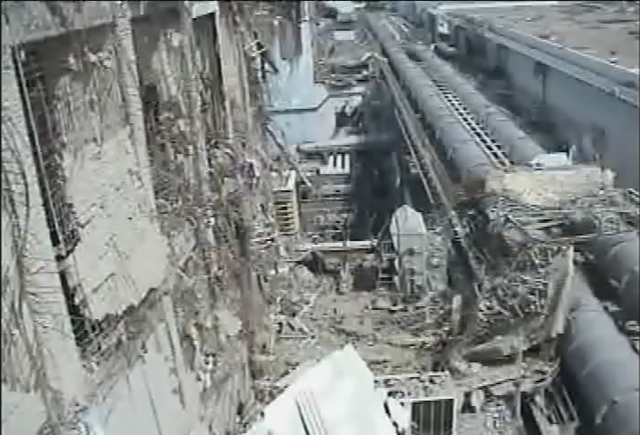Radiation in Fukushima No. 1 reactor may prevent human entry for several years
April 20 (Asahi Shimbun) – High levels of radiation discovered at the Fukushima No. 1 nuclear power plant could disrupt Tokyo Electric Power Co.’s timeline for a cold shutdown of the crippled facility, TEPCO officials acknowledged. On April 18 unexpectedly high levels of radiation were detected in water in the storage pool containing spent fuel rods in the No. 2 reactor, the officials said. TEPCO officials believe the radiation may have been triggered by damage to the spent fuel rods. One possibility being looked at is the damage was caused by debris falling into the pool when the Great East Japan Earthquake struck on March 11. An analysis of water samples taken from the storage pool on April 16 found cesium-134 at 160,000 becquerels per cubic centimeter, cesium-137 at 150,000 becquerels and iodine-131 at 4,100 becquerels. Ordinarily, the level of radioactivity in the pools is much lower. Another problem area is the building housing the No. 1 reactor. TEPCO officials used a U.S.-made robot on April 16 to measure radiation levels and detected radiation of 270 millisieverts per hour in the No. 1 reactor building. That level of radiation means a worker could spend less than an hour in the area before exceeding the allowable dosage. The exposure would be so high workers could not re-enter the area for several years, officials said. If radiation levels remain at high levels, TEPCO’s experienced workforce would all quickly reach maximum radiation exposure levels, severely slowing the effort to stabilize the plant. Radiation measurements were also taken at another entrance to the No. 1 reactor building and found levels of 49 millisieverts per hour. Radiation at an entrance to the No. 3 reactor building was also measured at 57 millisieverts per hour. Those are still high levels and workers who remain in that environment for five hours will reach the maximum amount of radiation exposure allowed. Huge volumes of water contaminated with radiation are also expected to slow work to bring the Fukushima reactors under control. Officials of the Nuclear and Industrial Safety Agency (NISA) said April 18 that a pool of water about five meters deep had been found in the basement of the building housing the No. 4 reactor. Radiation levels as high as 100 millisieverts per hour were detected on the water’s surface. About 54,000 tons of radiation-contaminated water also sits in the basements of the turbine buildings for the No. 1 to No. 3 reactors. The radiation level in the basement of the turbine building for the No. 2 reactor is especially high. …
